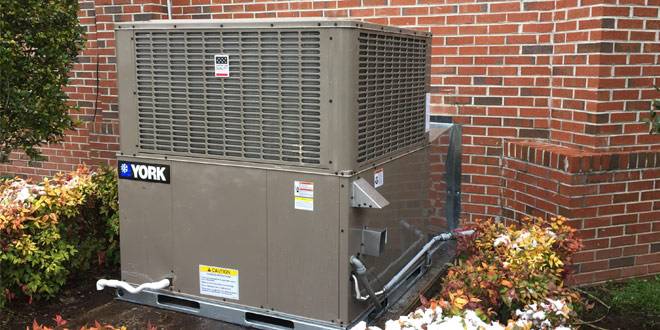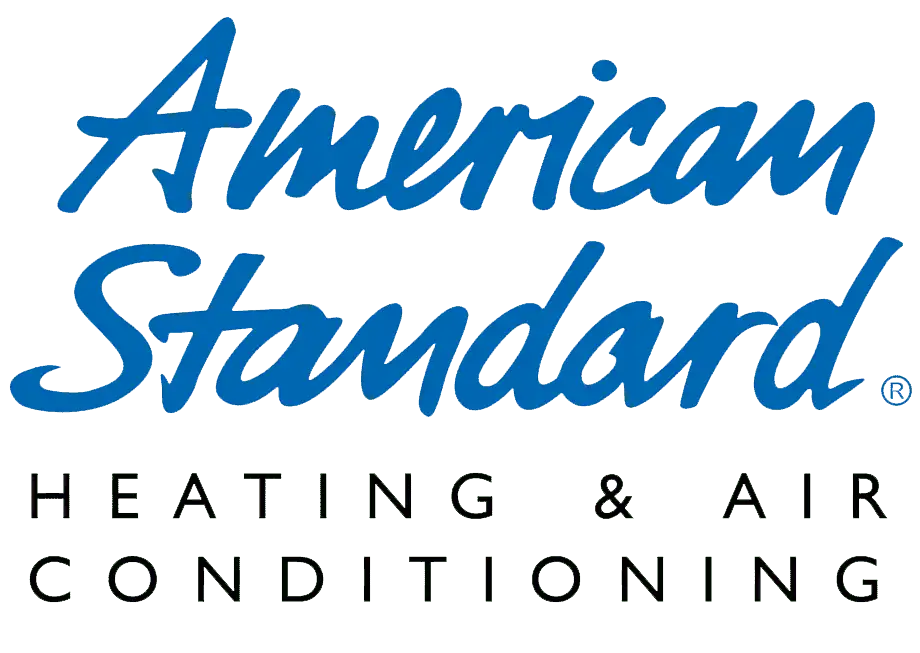
The process of HVAC sizing involves a detailed assessment of various factors to determine the most appropriate capacity needed to heat or cool a space effectively. Unfortunately, it’s a step often overlooked or simplified using rough estimates, leading to either oversized or undersized installations. An oversized system can cycle on and off more frequently, which can lead to increased wear and tear, while an undersized system may struggle to maintain the desired temperature, especially during extreme weather conditions.
In our years of experience, we’ve seen the impact that proper HVAC sizing can have on a property’s comfort and the owner’s wallet. Through this guide, we aim to demystify the complexities surrounding HVAC sizing, illustrating why it’s crucial, what factors contribute to determining the right size, and how to avoid common mistakes. We also provide insights into how we approach the sizing process, ensuring that our clients enjoy the dual benefits of comfort and cost-efficiency.
Understanding HVAC Sizing and Its Importance 🏠📏💡
The concept of HVAC sizing is foundational to the design and functionality of heating and cooling systems. It refers to calculating the capacity required for an air conditioning unit to efficiently maintain comfortable indoor temperatures in a specific area. This calculation is not merely about square footage; it involves a comprehensive analysis of various environmental and structural factors to ensure that the system can respond effectively to the unique demands of the space it serves.
The Significance of Correct HVAC Sizing
Proper air conditioner sizing is crucial for several reasons. Firstly, it directly influences the energy efficiency of the system. A perfectly sized unit operates in the most efficient manner, using the least amount of energy to maintain desired temperatures. This efficiency translates into lower energy bills, making it an economically favorable choice in the long run. Additionally, proper sizing extends the lifespan of the system by preventing the excessive wear and tear associated with frequent cycling, a common issue with oversized units.
Conversely, an undersized system will constantly struggle to achieve the set temperature, especially under extreme weather conditions. This not only leads to discomfort but can also cause continuous operation that significantly increases energy consumption and accelerates the system’s depreciation.
The Consequences of Incorrect Sizing
An oversized HVAC system, while capable of quickly heating or cooling, tends to cycle on and off more frequently. This short cycling not only reduces the system’s efficiency but can also lead to uncomfortable temperature fluctuations and increased maintenance issues over time. On the other hand, an undersized system is equally problematic. It runs continuously, struggling to reach the set temperature, resulting in higher energy costs, reduced comfort levels, and potentially premature system failure due to the increased workload.
Energy Efficiency and Comfort
The right HVAC size is synonymous with energy efficiency. Matching the system’s capacity with the demand minimizes the energy consumed, leading to significant savings. Moreover, a correctly sized system contributes to a consistently comfortable indoor climate by effectively managing humidity and temperature levels, creating a healthier and more pleasant living or working environment.
In summary, proper HVAC sizing is not a mere recommendation; it is a necessity for achieving optimal performance from your heating and cooling systems. It is the cornerstone of energy efficiency, system durability, and indoor comfort. Recognizing its importance is the first step toward making informed decisions about your HVAC installations, ensuring that they meet your needs while also being kind to your budget and the environment.
Factors Influencing HVAC Sizing 📊🌡️🛠️
Determining the correct size for an HVAC system involves a detailed consideration of multiple factors beyond the basic square footage of a space. Each element plays a crucial role in influencing the overall heating and cooling requirements, underscoring the need for a comprehensive assessment by professionals. Here, we’ll explore the key factors that impact HVAC sizing, highlighting the complexity of the process and the importance of accuracy.
1. Square Footage of the Property
While square footage provides a starting point, it’s the baseline from which more detailed calculations are made. The size of the area to be conditioned is a fundamental factor, but it’s only part of the story. Different layouts and space utilization can significantly affect heating and cooling needs.
2. Climate and Geographic Location
The local climate is a major determinant in sizing an HVAC system. Properties in areas with extreme weather conditions, whether hot or cold, will have different requirements than those in more temperate zones. The system must be capable of maintaining comfort levels during the harshest months.
3. Insulation Quality
Good insulation reduces the workload on HVAC systems by maintaining internal temperatures more effectively. The type, quality, and age of insulation in walls, attics, and floors can influence the size of the system needed. More efficient insulation means less heating or cooling is required to keep a space comfortable.
4. Windows and Doors
The size, type, and orientation of windows and doors affect how much heat is gained or lost. Large windows facing the sun can significantly increase cooling needs, while poorly sealed windows and doors can lead to heat loss during colder months.
5. Occupancy and Internal Heat Loads
The number of people regularly using the space and the presence of heat-generating appliances or equipment can also impact HVAC sizing. Each person and device adds to the heat inside a building, increasing the cooling requirements.
6. Building Design and Construction
The architectural design, including ceiling heights, open spaces, and the layout of rooms, can affect air circulation and the distribution of heated or cooled air. Construction materials may also influence the building’s ability to retain or dissipate heat.
The Process of Proper HVAC Sizing 🔄🛠️📏
Proper HVAC sizing is a meticulous process that integrates various factors to ascertain the ideal capacity for heating and cooling systems. This section outlines the comprehensive approach professionals take to ensure HVAC units are perfectly tailored to the specific requirements of a space, guaranteeing optimal efficiency and comfort.
Step 1: Conducting a Detailed Assessment
The first step involves a thorough evaluation of the property. This includes examining the factors previously discussed, such as square footage, insulation quality, window types, and occupancy. Professionals also consider the layout and orientation of the building, as these can significantly affect heating and cooling needs.
Step 2: Utilizing the Manual J Calculation
A cornerstone of HVAC sizing, the Manual J calculation, is employed to determine the precise load requirements of a space. This complex calculation takes into account all the variables affecting temperature control, including climate, building construction, and interior heat sources. By analyzing these details, Manual J provides a detailed view of the heating and cooling demands unique to each property.
Step 3: Factoring in Equipment Efficiency
After establishing the load requirements, the next step is to consider the efficiency of potential HVAC systems. The Seasonal Energy Efficiency Ratio (SEER) for cooling and the Annual Fuel Utilization Efficiency (AFUE) for heating are critical metrics. These efficiency ratings help select a system that not only meets the calculated load but does so in the most energy-efficient manner possible.
Step 4: Selecting the Appropriate System
With the load requirements and efficiency factors in mind, professionals can then identify the HVAC system that best fits the property’s needs. This selection process involves considering the type of system (e.g., central air, heat pump, furnace) and its capacity to ensure it aligns with the specific demands identified through the Manual J calculation.
Step 5: Professional Installation and Fine-tuning
Even with accurate sizing, the performance of an HVAC system heavily relies on proper installation and fine-tuning. Ensuring that ductwork is correctly sealed and insulated and that the system is balanced for optimal air distribution plays a crucial role in maximizing efficiency and comfort.
The Importance of Professional Expertise
The process of sizing an HVAC system underscores the importance of professional expertise. Specialized knowledge and tools are required to accurately calculate and interpret the factors influencing heating and cooling needs. Attempting to size an HVAC system without this expertise can lead to inefficiencies, increased costs, and discomfort.
Professionals not only bring technical skills to the table but also a commitment to ensuring that each system is tailored to the unique characteristics of the property it serves. This personalized approach guarantees that the selected HVAC system will provide the best possible performance in terms of energy efficiency, comfort, and long-term reliability.
Benefits of Proper HVAC Sizing 🏆🔄🏠
The advantages of accurately sizing an HVAC system extend far beyond merely ensuring a comfortable indoor temperature. Proper HVAC sizing is pivotal in realizing significant cost savings, enhancing system efficiency, improving indoor air quality, and contributing to environmental sustainability. This section delves into the multifaceted benefits that underscore the importance of meticulous HVAC sizing.
1. Cost Savings on Energy Bills
A well-sized HVAC system operates more efficiently, consuming less energy to heat or cool space to the desired temperature. Oversized systems cycle on and off more frequently, a process that not only wastes energy but also leads to higher utility bills. Conversely, systems that are too small overwork to maintain temperatures, similarly resulting in increased energy consumption. Proper sizing ensures that the system runs efficiently, optimizing energy use and reducing costs over time.
2. Enhanced System Efficiency and Longevity
Systems that are correctly sized experience less wear and tear since they cycle on and off as intended, maintaining desired temperatures without overexertion. This optimal operation reduces the risk of frequent breakdowns and extends the lifespan of the HVAC system. Maintenance costs are also minimized, as properly sized systems are less likely to suffer from issues related to overuse or inadequate cooling and heating cycles.
3. Improved Comfort Levels
Comfort is not solely about achieving the right temperature; it also involves maintaining consistent temperature levels, adequate humidity control, and ensuring good air circulation within a space. A properly sized HVAC system is adept at managing these factors efficiently, providing a stable and comfortable indoor environment regardless of the season.
4. Better Indoor Air Quality
HVAC systems play a crucial role in maintaining indoor air quality by filtering out pollutants and managing humidity levels. A system that is correctly sized is more effective at circulating and filtering the air, which reduces the risk of mold growth and the accumulation of allergens and pollutants. This is particularly important for individuals with respiratory conditions or allergies, as it ensures a healthier living or working environment.
5. Environmental Sustainability
Choosing an HVAC system of the appropriate size contributes to environmental conservation efforts. Efficient systems reduce energy consumption, which in turn lowers greenhouse gas emissions associated with electricity production. By minimizing the carbon footprint of heating and cooling operations, proper HVAC sizing aligns with broader sustainability goals, making it a responsible choice for eco-conscious homeowners and businesses.
In essence, the benefits of proper HVAC sizing are comprehensive, touching on economic, functional, health, and environmental aspects. These advantages highlight the necessity of professional involvement in the HVAC selection process, ensuring that systems are not only tailored to specific requirements but also contribute positively to the overall well-being of occupants and the planet. Accurate sizing is a critical step in achieving the optimal performance of HVAC installations, underscoring the commitment to quality, efficiency, and customer satisfaction.
Common Mistakes to Avoid in HVAC Sizing ❌🚫📏
The process of HVAC sizing is intricate and requires a nuanced understanding of many variables. Despite the best intentions, common mistakes can lead to improper sizing, significantly impacting system efficiency, longevity, and comfort. This section outlines some of the frequent missteps in HVAC sizing and offers guidance on how to avoid them.
1. Overlooking Insulation and Air Sealing
One of the most common oversights is failing to consider the quality of insulation and the effectiveness of air sealing. These factors greatly influence the heating and cooling needs of a space. Up-to-date insulation and proper air sealing reduce the workload on HVAC systems by maintaining indoor temperatures more effectively. Neglecting these aspects can lead to an overestimation of the required system capacity.
2. Ignoring Local Climate and Weather Patterns
The local climate and weather patterns play a critical role in determining the appropriate size of an HVAC system. A mistake often made is using generic, one-size-fits-all guidelines without adjusting for specific regional conditions. For instance, areas with high humidity levels may require systems with enhanced moisture control features, which could affect sizing considerations.
3. Relying Solely on Square Footage
While square footage is a crucial starting point for calculating HVAC size, it should not be the only factor considered. Solely basing the size of an HVAC system on the square footage fails to account for other critical determinants, such as ceiling height, window size, and the building’s orientation. This can lead to significant discrepancies between the calculated and actual heating and cooling needs.
4. Disregarding Room-by-Room Differences
Different rooms may have varying heating and cooling requirements based on their use, orientation, and external wall exposure. A common mistake is to size the HVAC system for the average conditions across the entire building rather than accounting for these room-by-room differences. This can result in inefficient heating and cooling, with some areas being too hot or too cold.
5. Choosing a System Based on Existing Equipment
When replacing an HVAC system, a frequent error is to select a new unit based solely on the specifications of the existing equipment. This approach fails to consider changes that may have occurred since the original installation, such as renovations or improvements in insulation. It also misses an opportunity to account for advancements in technology that could offer more efficient or suitable options.
6. Not Consulting with Professionals
Perhaps the most critical mistake is attempting to size an HVAC system without professional input. HVAC professionals use specialized tools and calculations, such as the Manual J calculation, to determine the best system size accurately. DIY approaches or estimations can lead to inaccuracies, resulting in systems that are either too large or too small for the space.
Avoiding These Mistakes
To avoid these common mistakes, it’s essential to approach HVAC sizing with a comprehensive perspective, considering all relevant factors and changes in the property. Consulting with HVAC professionals ensures a thorough assessment, accounting for the unique characteristics of the space and the latest advancements in HVAC technology. This attention to detail ensures that the selected system is optimally sized, providing efficient, effective, and reliable heating and cooling.
Choosing the Right HVAC System and Professional Installation 💼📏🛠️
Selecting the appropriate HVAC system for your home or business is a decision that goes beyond simply finding the right size. It involves considering a range of factors, including system type, efficiency ratings, and the specifics of the installation process. Moreover, the importance of professional installation cannot be overstated, as it ensures the system operates as intended, providing optimal comfort and efficiency. This section delves into the nuances of choosing the right HVAC system and underscores the significance of entrusting its installation to skilled professionals.
Selecting the Right System
After determining the correct size for your HVAC system using the detailed process described earlier, the next step is to choose the system that best meets your needs. Here are key considerations to guide your selection:
- System Type: Whether it’s a central air conditioner, heat pump, furnace, or a combination of these, the choice depends on your climate, the physical layout of your property, and your heating and cooling needs.
- Energy Efficiency: Systems with higher SEER (for cooling) and AFUE (for heating) ratings are more efficient, leading to lower energy bills and a reduced environmental footprint. While these units may have a higher upfront cost, the long-term savings can be significant.
- Features and Technology: Modern HVAC systems come with a variety of features and technologies designed to improve comfort and efficiency. Programmable thermostats, variable speed motors, and smart home compatibility are just a few options that can enhance system performance and convenience.
The Importance of Professional Installation
A system’s performance and efficiency are only as good as its installation. Here’s why professional installation is critical:
- Expertise and Precision: Professional HVAC technicians have the training and experience necessary to install systems correctly. They understand the intricacies of different models and how to optimize them for your specific setting.
- Compliance with Standards: Professionals ensure that installations comply with all local building codes and manufacturer guidelines, which is essential for both safety and performance.
- System Longevity and Efficiency: Properly installed systems operate more efficiently and are less likely to experience breakdowns, extending their lifespan and saving you money on repairs and replacements.
- Warranty and Support: Many manufacturers require professional installation as a condition of their warranty. Using certified technicians means you’re covered should anything go wrong.
Ensuring a Smooth Installation Process
To ensure a smooth installation process, it’s important to work with a reputable HVAC contractor who can provide a detailed estimate, explain your options, and answer any questions you may have. Here are a few tips:
- Research and Reviews: Look for contractors with strong reviews and testimonials from previous customers.
- Certifications and Licenses: Ensure the contractor is licensed, insured, and certified to work with the equipment you’re choosing.
- Estimates and Consultations: A reliable contractor will offer a comprehensive estimate and consultation to discuss your needs and options before beginning the installation.
In conclusion, choosing the right HVAC system and ensuring its professional installation are pivotal steps toward achieving lasting comfort and efficiency in your home or business. By carefully selecting a system that meets your needs and entrusting its installation to skilled professionals, you can enjoy the full benefits of modern HVAC technology, ensuring a comfortable, energy-efficient environment for years to come.
Maintenance Tips to Keep Your HVAC System at Peak Efficiency 🛠️📈💡
After investing in the right HVAC system and ensuring it’s professionally installed, regular maintenance is crucial to keep it running at peak efficiency. Proper care not only extends the lifespan of your system but also maintains its efficiency, saving you money on energy bills and costly repairs. This section provides practical maintenance tips and best practices to ensure your HVAC system continues to provide optimal comfort and performance.
1. Regular Filter Changes
Importance: One of the simplest yet most effective ways to maintain your HVAC system is by regularly changing or cleaning its air filters. A dirty filter restricts airflow, forcing the system to work harder, which can lead to increased energy usage and potential system damage.
Frequency: Check your filters at least every 1-3 months, depending on usage and type. Homes with pets or high dust levels may require more frequent changes.
2. Seasonal Inspections and Tune-ups
Scheduling: Have a professional perform detailed inspections and tune-ups before the heating and cooling seasons begin. These check-ups ensure that your system is clean, and all components are functioning correctly.
Benefits: Regular tune-ups can prevent unexpected breakdowns, improve energy efficiency, and extend the system’s lifespan.
3. Clearing the Area Around Outdoor Units
Space Requirements: Ensure that the area around your outdoor HVAC units is clear of debris, vegetation, and other obstructions. A minimum clearance of 2 feet around the unit is recommended for optimal airflow and accessibility.
Regular Cleaning: Keep the outdoor unit free of leaves, pollen, and dirt, which can impede performance and efficiency.
4. Checking and Sealing Ductwork
Leakage Issues: Leaks in your ductwork can significantly reduce system efficiency by losing heated or cooled air before it reaches its intended destination.
Inspection and Repair: Have your ducts inspected for leaks or damage periodically and ensure any issues are promptly sealed and repaired.
5. Upgrading Thermostats
Smart Control: Consider upgrading to a programmable or smart thermostat if you haven’t already. These devices optimize your HVAC system’s operation based on your schedule and preferences, potentially saving energy and enhancing comfort.
Correct Usage: Ensure your thermostat is properly set up and located away from direct sunlight, drafts, doorways, and windows to accurately measure your home’s temperature.
6. Professional Maintenance Plans
Advantages: Enrolling in a professional maintenance plan can provide peace of mind and ensure your system receives the care it needs. These plans often include priority service and discounts on repairs.
Customized Care: Maintenance plans can be tailored to your system’s specific needs and usage patterns, ensuring optimal performance year-round.
In summary, regular maintenance is key to ensuring your HVAC system operates efficiently and effectively over its lifespan. By following these tips and enlisting professional help when necessary, you can maintain a comfortable indoor environment, minimize energy consumption, and avoid unnecessary repairs. Remember, a well-maintained HVAC system is more reliable, performs better, and lasts longer, providing significant savings and comfort in the long run.
Take the Next Step with Us! 🌟
Ready to experience unparalleled comfort and efficiency? Contact Ryan Heating & Air today! Our team of experts is committed to providing tailored HVAC solutions that meet your specific needs. Let us help you select and install the perfect system for your home or business. Embrace a future of comfort and savings now! 🏠💼🌍



